Advertisements
They say that the pinnacle of adulthood is a household plant. Whether we keep them in the living room or the bathroom, we can’t deny the impact they have on our homes, both physically and emotionally.
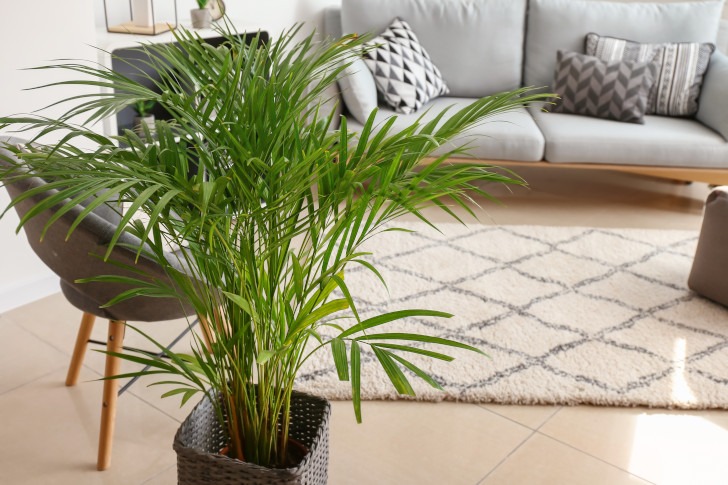
In fact, keeping plants at home can have amazing health benefits, too. The increased oxygen levels help us sleep, heal, and relax. We’ve outlined some of the best household plants you can invest in all year round. Let’s take a peak, shall we?
Spider plant (Chlorophytum comosum)
Even if you have a habit of forgetting about your new houseplants, it won’t be easy to ruin this stubborn plant. With plenty of rich foliage and small white flowers, the spider plant battles formaldehyde, benzene, carbon monoxide and xylene.
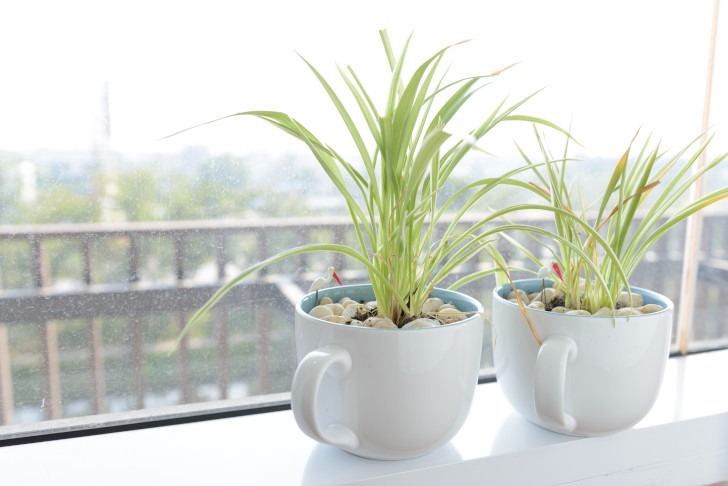 Shutterstock
ShutterstockAs an additional bonus to having the spider plant, it is also considered a safe houseplant if you have pets at home. So, no need to hold off on one of these if you have a dog or cat. Keep them in a bright room without direct access to sunlight.
Gerbera daisy (Gerbera jamesonii)
This bright plant is perfect to keep in your bedroom or laundry room due to its ability to remove trichloroethylene. This means it filters some of the benzene that comes with inks. Just make sure you keep it next to plenty of sunlight.
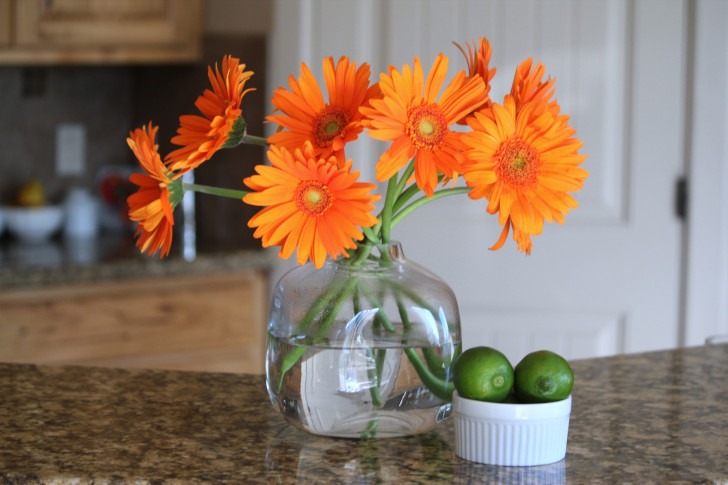 Shutterstock
ShutterstockThese houseplants need at least six hours of sunlight each day to sustain them. What’s more, you’re going to want to keep them in a well-drained plant pot to make sure they can get a lot of water each day.
Snake plant (Sansevieria trifasciata ‘Laurentii’)
The snake plant is also called the mother-in-law’s tongue – although we can’t imagine why! These houseplants are perhaps best known for their ability to filter out formaldehyde. Formaldehyde is a common chemical in cleaning products, toilet paper, and tissues.
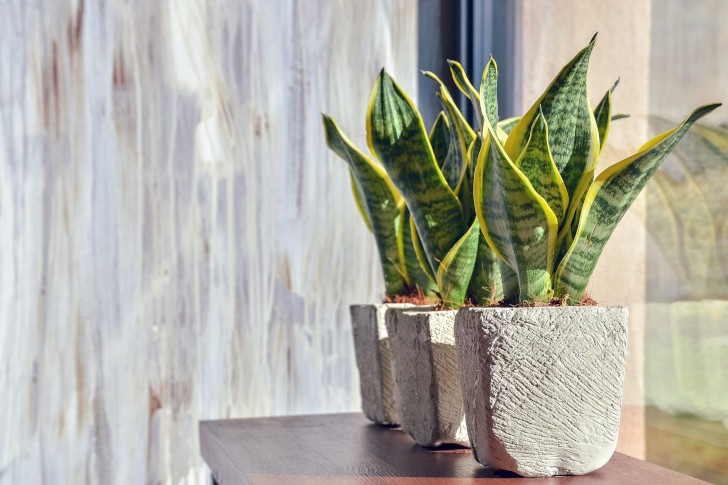 Shutterstock
ShutterstockTherefore, the best place to keep a snake plant is in your bathroom – it loves the low light and steady humidity. These plants actually absorb carbon dioxide and convert it into oxygen at NIGHT as opposed to the day – so putting one in your room can help you sleep, too.
Golden pothos (Scindapsus aures)
This is another perfect houseplant to have to balance the formaldehyde levels in your home. The vine grows quickly and will ultimately create a bunch of greenery hanging from baskets. Fun fact: the golden pothos stays green even out of sunlight!
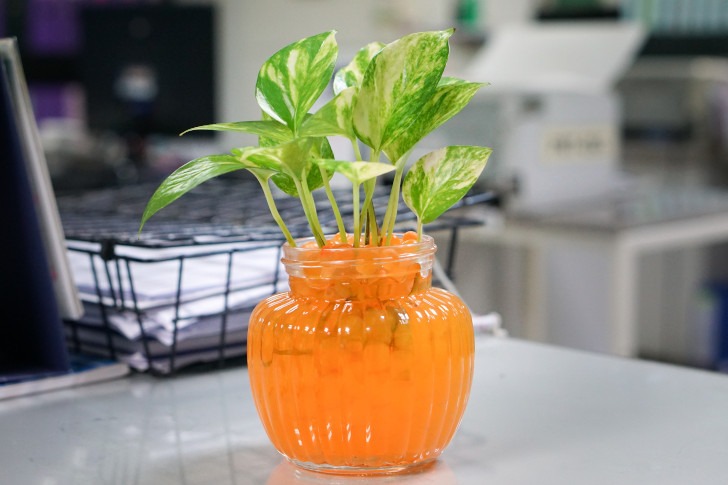 Shutterstock
ShutterstockThe slight disadvantage of the golden pothos is that they are actually relatively poisonous to young children and pets. Something to consider if you are in a young family and have little kids running around!
Chrysanthemum (Chrysantheium morifolium)
These bright houseplants can do more than just make a room look more colorful and homely. The blooms of Chrysanthemum help filter out benzene, often found in paint, glues, or detergent. This means it’s the perfect plant for living rooms or offices.
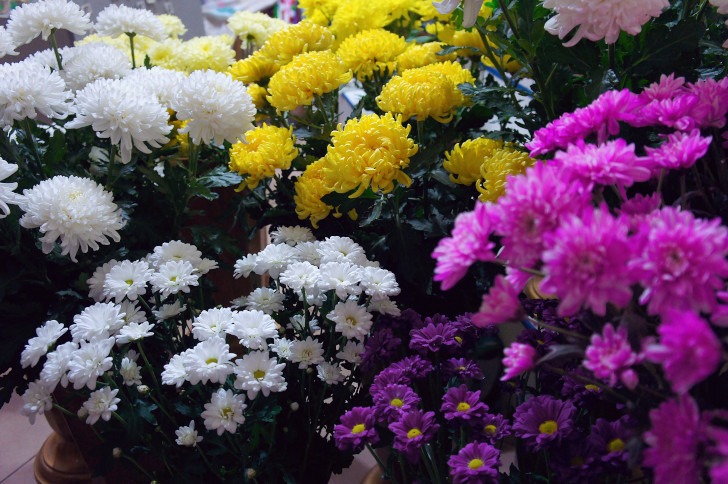 Shutterstock
Shutterstock‘Mums’ come in almost any color (except blue), which means they’re the perfect addition to almost any room. If choosing a Chrysanthemum, make sure you get the floral mum and not a garden mum, which are better suited for outdoors.
Red-edged dracaena (Dracaena marginata)
These distinct red edges of the dracaena make for a unique addition to any household room. In fact, they’re more than just a pop of color: these houseplants can grow as high as your ceiling! Red-edged dracaena can remove xylene, often introduced by gasoline or varnish.
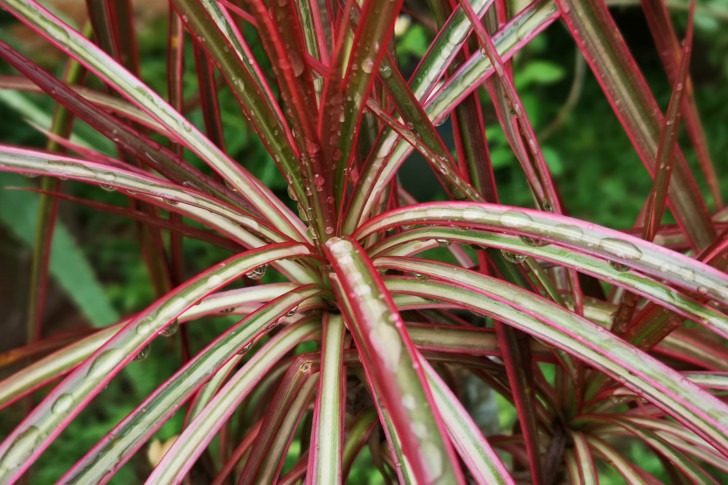 Shutterstock
ShutterstockThis means that the best place to keep these impressive plants is a garage. Anywhere that hosts DIY projects and a high ceiling is the perfect place for these huge plants.
Weeping fig (Ficus benjamina)
Keeping one of these figs in your living room will be the perfect way to filter out some of the pollutants that come with carpets or some furniture. Even though caring for one of these is a bit more demanding than other plants, it’s definitely worth it.
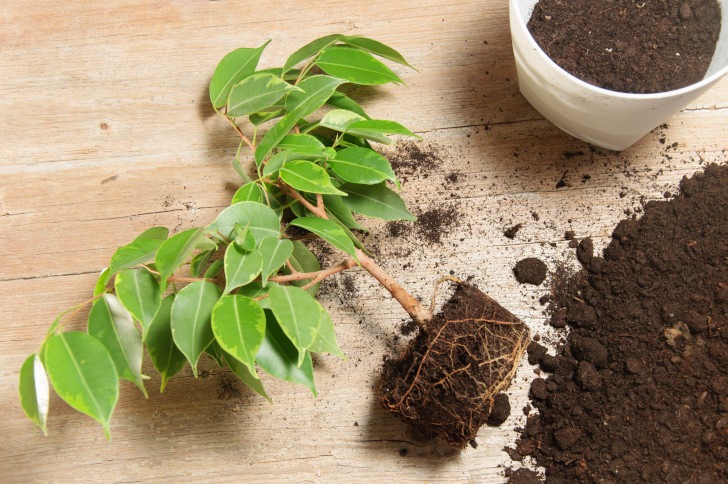 Shutterstock
ShutterstockWeeping figs grow best when they are grown in a bright room with indirect light. According to the New York Botanical Garden: “It is challenged by dramatic temperature and light-level fluctuations.”
Azalea (Rhododendron simsii)
Welcome this amazing flower into your home and watch it fight against formaldehyde from things like foam and fly wood. If you’ve recently renovated your home, the Azalea is the perfect houseplant to clean the air around you.
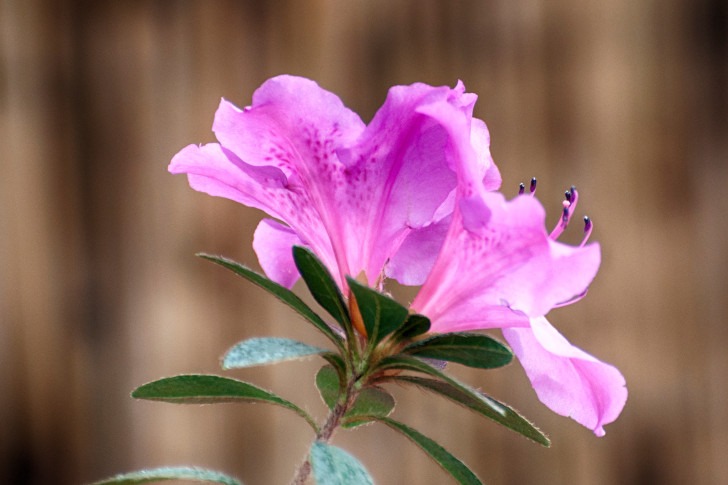 Shutterstock
ShutterstockIf your home is dry, you will have to mist it every few days to make it a more friendly environment. Finally, make sure to clear any of if the dead leaves away – it will reduce the chances of disease.
English ivy (Hedera helix)
According to a study, English ivy can reduce the number of airborne fecal-matter particles in the air. So, we all know what that means. Keeping an English ivy plant in your bathroom will help filter out the air and freshen up the room.
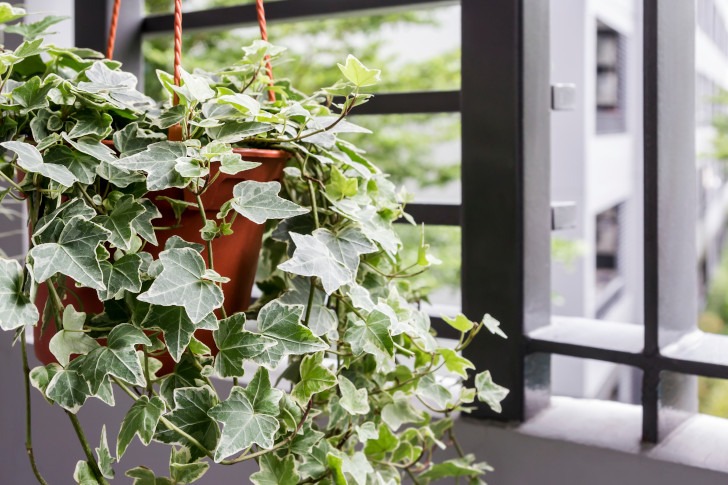 Shutterstock
ShutterstockNot all of us are such a fan of the English ivy. The National Park Service called it “an aggressive invader that threatens all vegetation levels of forested and open areas.” But don’t worry: keeping one in a pot at home won’t cause too much damage!
Warneck dracaena (Dracaena deremensis ‘Warneckii’)
Some houseplants are better suited to tackle pollutants than others. The Warneck dracaena is a perfect example of this – even without direct sunlight. Due to the long, thin reach of this plant, its presentation is often pretty striking, too.
 Wikimedia Commons
Wikimedia CommonsYou’ve probably seen these houseplants around the block: they’re known for their white stripes along the edges of their leaves. If, for whatever reason, the white edges turn brown, you might need to change your water to bottled H2O.
Chinese evergreen (Aglaonema Crispum ‘Deborah’)
These houseplants are fairly easy to maintain, relying on low light and minimal water to help them flourish over time. Don’t let that fool you: these plants have amazing benefits to your home.
 Shutterstock
ShutterstockThe Chinese evergreen can help filter our air pollutants and can remove toxins. Watch out for the unique blooms and red berries that sprout from them every so often. The only thing to consider is the humidity levels in your air: make sure it has enough water to feed the plant.
Bamboo palm (Chamaedorea sefritzii)
The bamboo palm is also known as the reed palm – perfect for thriving in shady, indoor spaces. Watch out: strong maintenance of these houseplants can often lead to flowers and small berries. Overall, it tops our list for its ability to filter out both benzene and trichloroethylene.
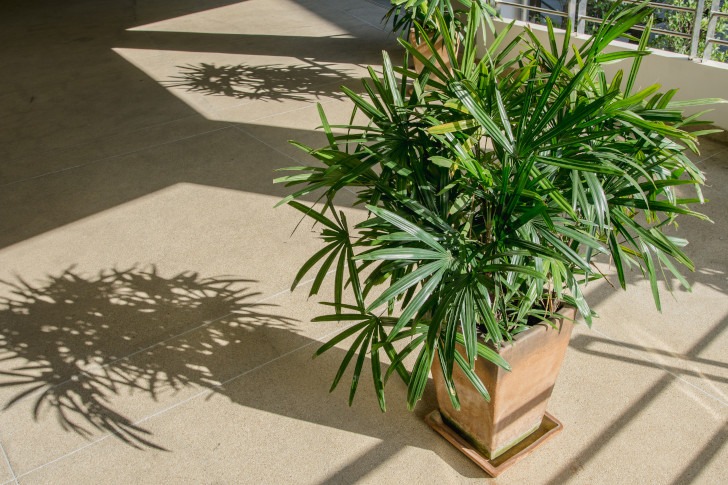 Shutterstock
ShutterstockThe Bamboo palm comes from Mexico and central America – growing up to 7ft tall if properly managed. Keep it warm with an 80 degree climate and don’t overwater it. These things are pretty good at looking after themselves.
Heartleaf philodendron (Philodendron oxycardium)
If you have kids or small pets, you might want to reconsider this houseplant. The climbing vine can have toxic consequences if consumed – but they’re a fantastic addition to any home. The Heartleaf philodendron removes all VOCs and can battle formaldehyde, too.
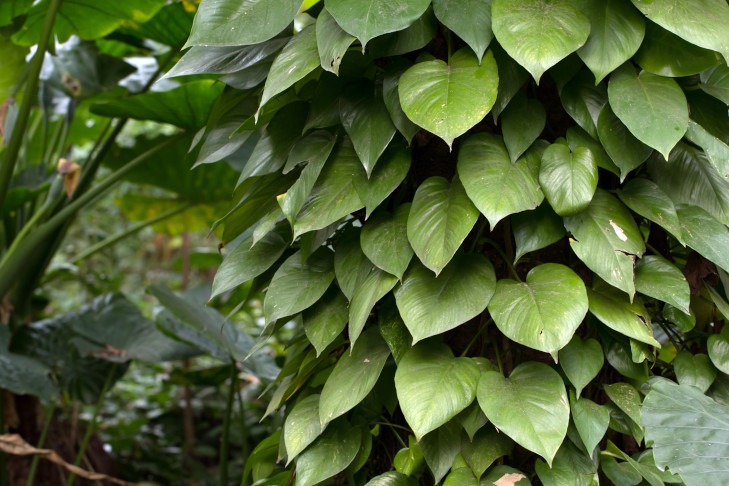 Shutterstock
ShutterstockThe best part of these houseplants is how easy they are to maintain. They best thrive outside of direct sunlight and can be trained to climb and wrap around screens, poles, or trellis. If you don’t have kids or pets, make sure to check these out.
Peace lily (Spathiphyllum)
These peace lilies don’t need much to survive in your home: just some shade and weekly watering. The peace lily recently topped NASA’s list as one of the best houseplants to help remove formaldehyde, benzene and trichloroethylene.
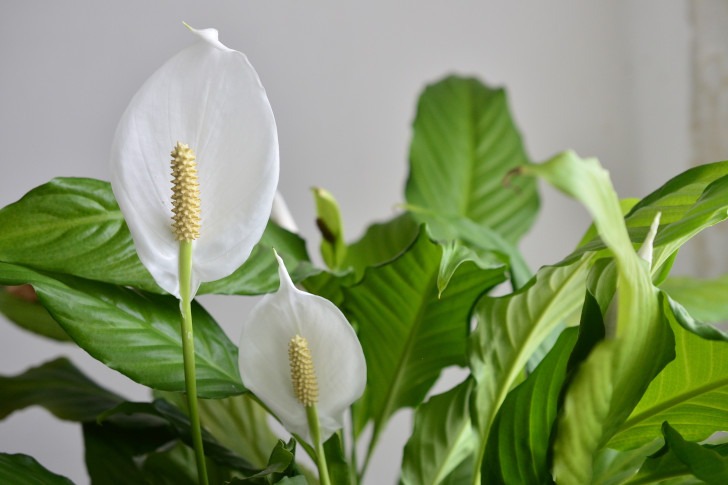 Shutterstock
ShutterstockThis means there are almost no drawbacks to having a peace lily in your home. They’re healthy, pretty, and can have amazing benefits on your air quality at home. The best thing? They tell you when they’re thirsty.
Boston fern (Nephrolepis exaltata)
Sponsored Links:
These Boston ferns are perfectly leafy and green, which will instantly make your room more lively and homely. What’s more, they can tackle the toxins in your air without much maintenance. All it needs is a little indirect sunlight in the day.
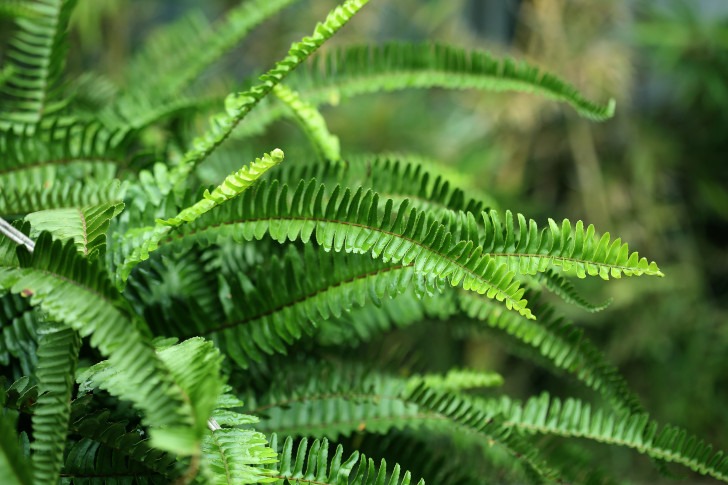 Shutterstock
ShutterstockThe only thing to consider when buying a Boston fern is its intolerance to severe heat. Make sure to keep these houseplants away from vents and fireplaces if you have them. A perfect climate for these is around 65 degrees.
Lady palm (Rhapis excelsa)
The Lady palm is actually a member of the same family as the Areca. Even though they look a little different, their maintenance is almost exactly the same which means you can keep both of these together without changing your routines.
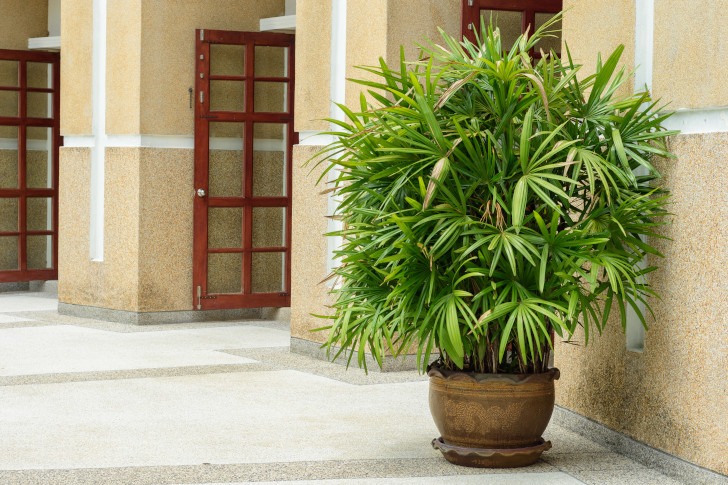 Shutterstock
ShutterstockThe lady palm is basically one of the best air purifiers out there. They are a little shorter and rounder than their Areca cousins and can fit into smaller spaces if necessary. Consider getting both at once if you want an eclectic bunch of houseplants.
Dragon tree (Dracaena draco)
The dragon tree is the perfect addition to your home if you’re looking for something with a little bark to it. It’s best to keep these houseplants in medium light, but they will also grow at lower levels if necessary.
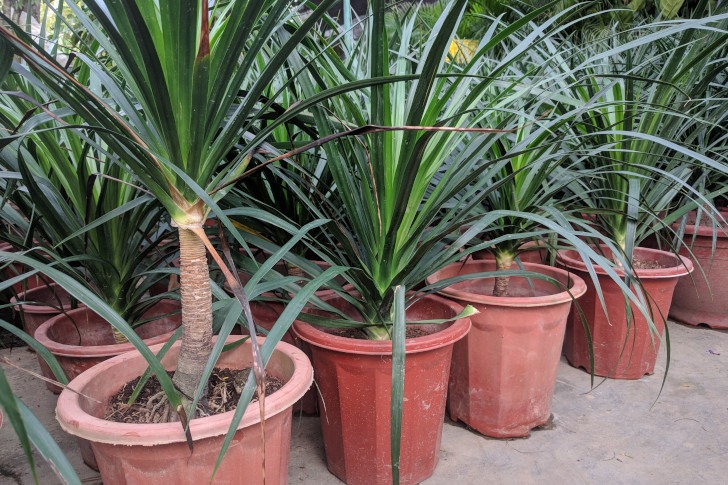 sharohyip | Shutterstock
sharohyip | ShutterstockRemember: the less light it receives, the less you’ll need to water it. This means it can be left alone for as long as three weeks. Keep them small enough and you can pop a pot on your desk for better air quality while you work.
Prayer plant (Maranta leuconeura)
Maranta leuconeura gets its name from the way it curves up its leaves at night – looking like it is praying. For those who are first time plant owners, the prayer plant is the perfect household item. It requires less work than other plants on the list.
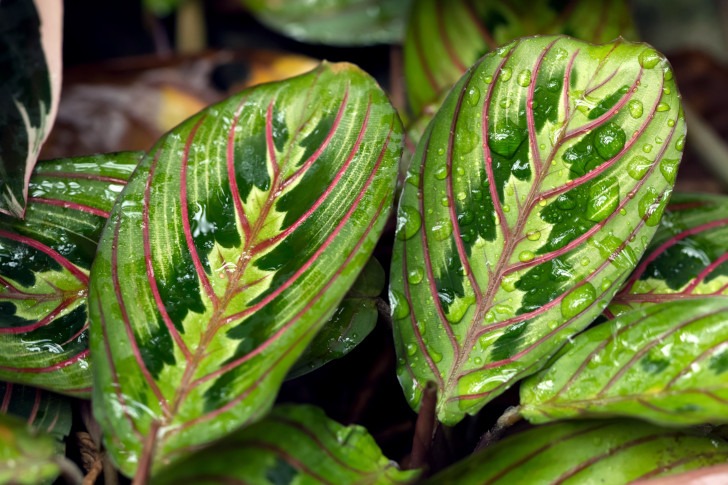 Skyprayer2005 | Shutterstock
Skyprayer2005 | ShutterstockSimply keep a small pot in indirect sunlight and medium temperatures and see how your air quality improves in no time. Just make sure to invest in an acidic fertilizer – something that can be picked up in any hardware store.
Geranium (Pelargoniums)
Geraniums are a charming plant that can lighten up almost any home as soon as they’re brought inside. In a study that included more than 80 plants, most people found Geraniums the most effective at getting rid of formaldehyde in indoor air.
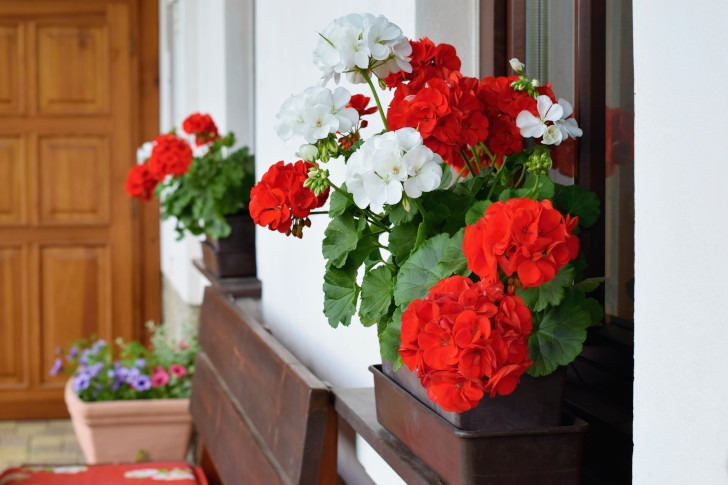 Shutterstock
ShutterstockBetter yet, you don’t need to feel trapped at home if you invest in these plants. They can survive for roughly two weeks without water and their long-lasting aroma helps repel mosquitoes. If you want to add a lovely smell to your home, then these are the flowers for you.
King of Hearts (Homalomena Wallisii)
The King of Hearts can be an effective addition to any home that wants to remove ammonia from any indoor air. This is why it is a common office plant, due to the number of people that often come and go throughout the long days.
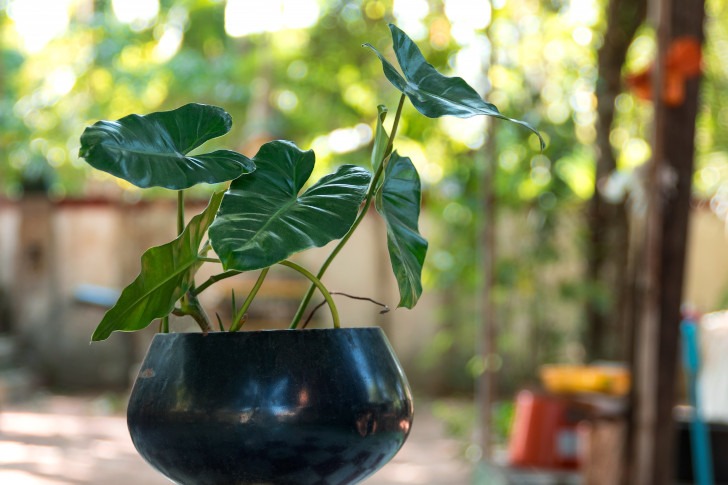 Shutterstock
ShutterstockAll you need to the King is a some mid-shade space that avoids drafts or excessive heat. Be warned: even though it is a King, the plant is still sensitive (aren’t we all) and will still need to be maintained fairly frequently.
Croton
There are a few different varieties of Crotons and all of them are strong at getting rid of formaldehyde from the air. Compared to other plants, they have a quick transpiration rate which means they fill rooms with oxygen quicker than other plants.
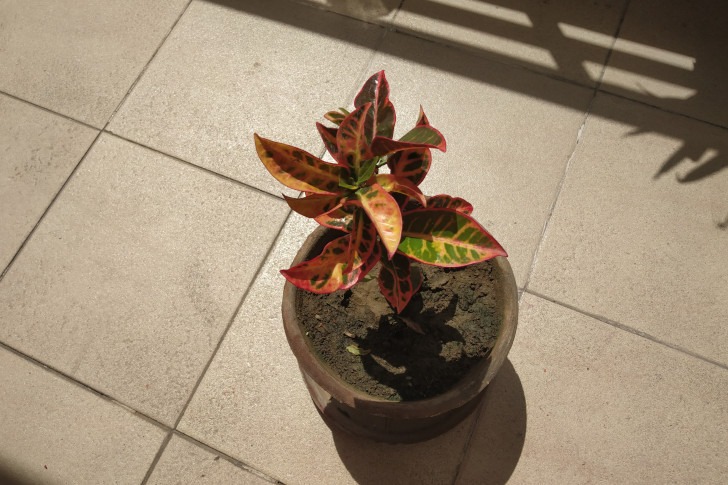 Shutterstock
ShutterstockDue to their inherently thick leaves, they can live a long time, provided that you wipe the leaves down often to make sure they are clean and healthy. You need to make sure their soil is always moist but never too wet.
Poinsettia (Euphorbia Pulcherrima)
Like most of the plants on the list, this flower is a good addition to a home or office that wants to level the amount of formaldehyde in the air. All you need to do is make sure it gets plenty of sunlight and warmth, and make sure it isn’t resting in a drafty place.
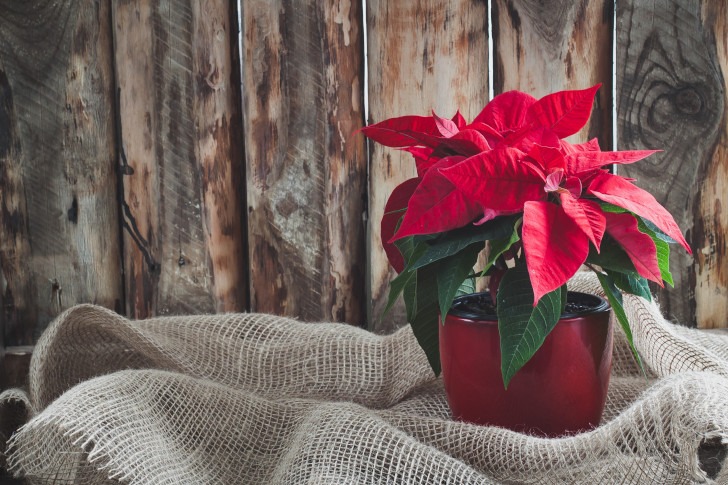 Shutterstock
ShutterstockYou might want to hold back on a Poinsettia if you have animals or young children. While not poisonous, it can cause a mild rash around the mouth if accidentally eaten.
Peacock Plant (Calathea Makoyana)
The Peacock is particularly good at extracting ammonia from the air. However, first-time plant owners might not want to rush into getting one of these – their famously hard to take care of. It’s a semi-shade plant that needs very particular levels of water, sunlight, and humidity.
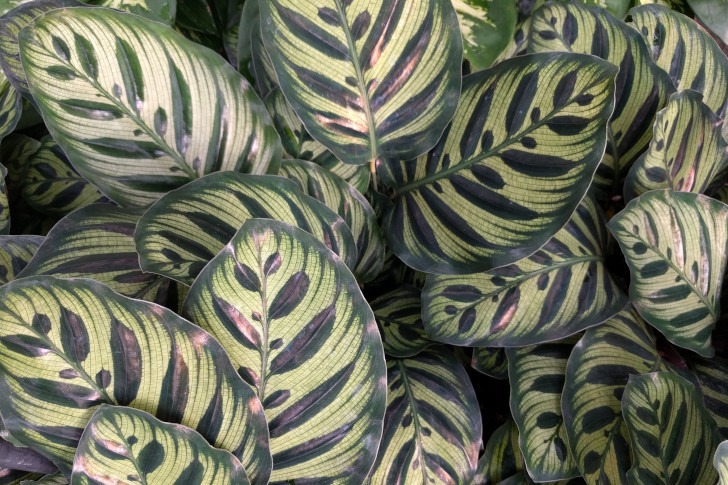 Shutterstock
ShutterstockDepending where you live, you might be stuck moving this one round the house each day so it has exactly what it needs. If you’re a plant expert, then you might want to think about upgrading you game to this beast.
Christmas Cactus (Schlumbergera)
The Christmas Cactus has a peculiar method of clearing the air of carbon dioxide and releasing oxygen – but during the night! Since it operates on a ‘nocturnal’ time clock, the Christmas Cactus is one of the best houseplants to keep in your room.
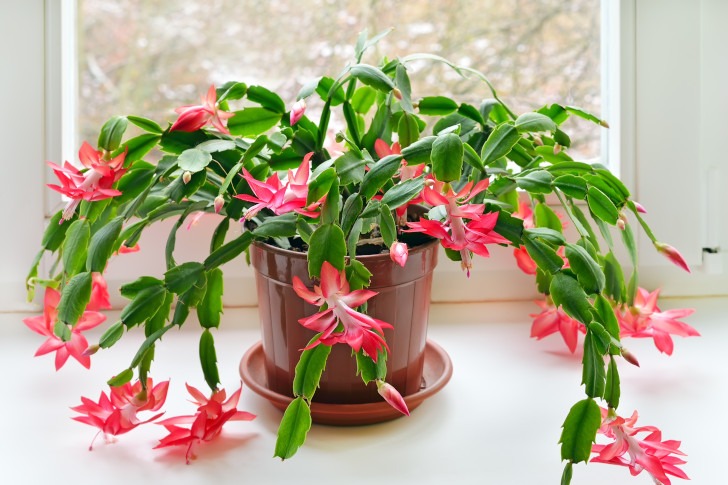 Shutterstock
ShutterstockHowever, it’s not all plain sailing. This is a pretty tough plant to maintain, since it needs the perfect amount of water which has to have access to drain. In total, it needs 14 hours of darkness and only eight hours of sunlight per day.
Kimberly Queen Fern (Nephrolepis obliterata)
Every King needs his Queen! His fern will clear your hair of both formaldehyde and trichloroethylene. This means they’re incredibly effective houseplants to have either at home or the office – wherever is busy full of people.
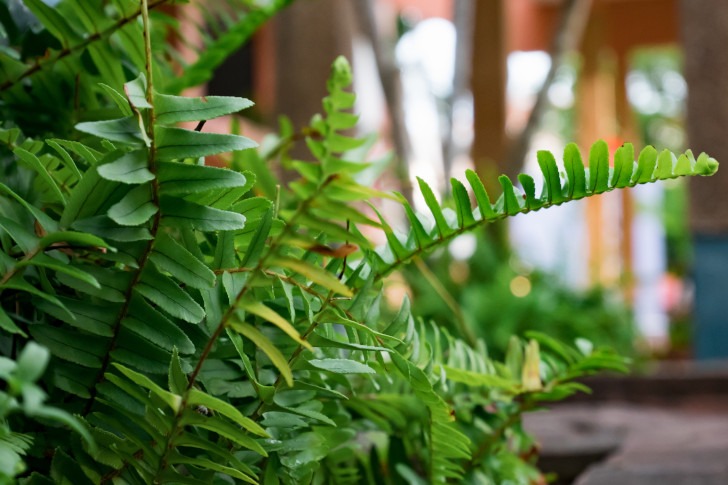 Shutterstock
ShutterstockGenerally, they’re not too hard to take care of – and perfectly safe for humans and animals. Even though their prefer indirect sunlight, they can survive in direct heat if they are watered regularly. These are definitely recommended to have at home.
Lily turf (Liriope spicata)
Amazingly, Lily turf filters ammonia, formaldehyde, xylene, and toluene all from the air. This makes it an incredible asset to most classrooms or office spaces due to its ability to provide fresh and constant oxygen.
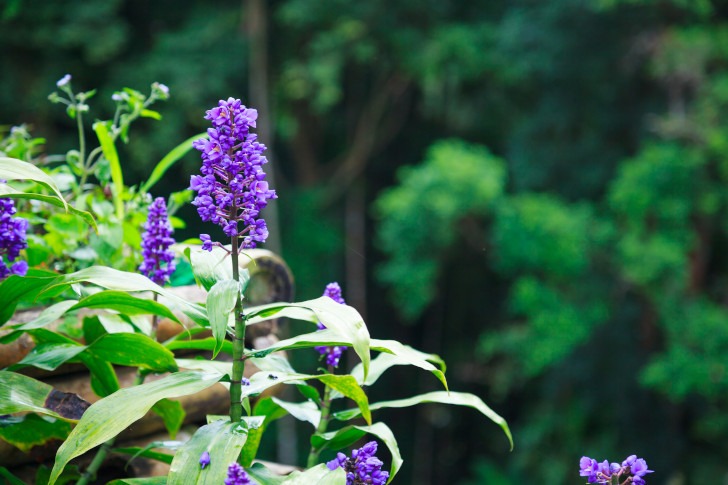 Shutterstock
ShutterstockSince it doesn’t respond well to dry air, the plant needs a constant flow of water – making it quite the nuisance to care for. It’s probably best if caretakers take it in turns to water the lily turfs and they’re not left alone at home.
Dendrobium Orchids (Dendrobium)
These orchids are great and clearing the air of toluene and xylene. Overall, there are more than 1800 different species and all survive in different parts of the world. This means that some of them require more care than others.
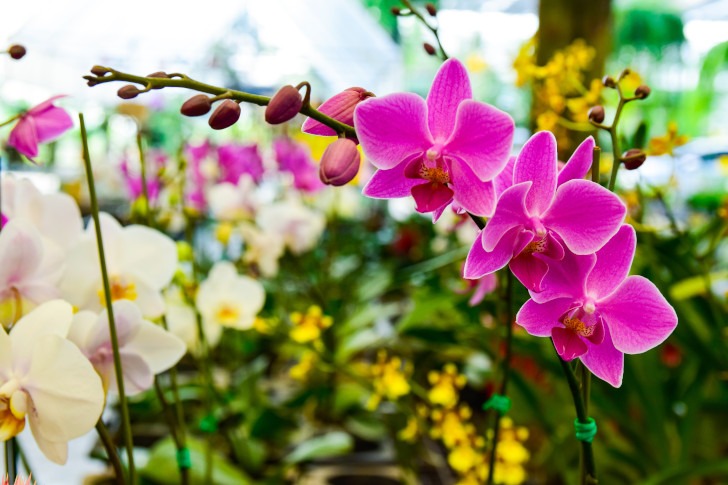 Shutterstock
ShutterstockWhen buying Dendrobium orchids, make sure you get the ones that are good for you. Generally, it’s important that these houseplants have indirect but high-intensity light with a lot of water. All 1800 types are non-toxic and safe around children.
Dwarf Banana (Musa Cavendishii)
While it might be hard to get a hold of this mini banana tree, they’re incredibly effective at getting rid of the formaldehyde in your air. Once you get your hands on one, you’ll be surprised just how easy it is to look after a dwarf banana.
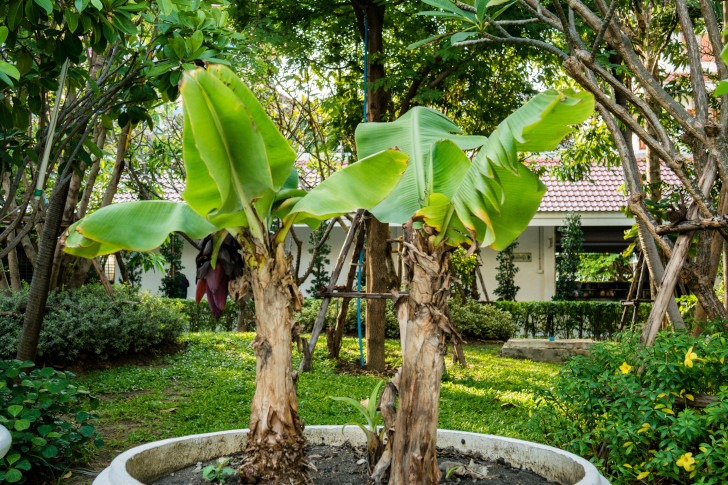 Shutterstock
ShutterstockThey can go a few weeks without the need to get watered, meaning that you can sit back and enjoy their benefits without having too much pressure to maintain it. All you need to do is make sure there’s plenty of mulch and direct sunlight each day. Easy!
Areca palm (Dypsis lutescens)
The Areca palm is one of the most popular indoor houseplants since it doesn’t rely on direct sunlight. This means all you need is a plant pot and it can then be kept in basically any room with a window.

All you need to do is water the soil when it feels dry and keep it at around 70 degrees. The best part about the Areca palm is how it only grows to the size of its pot. If you want to keep it small, simply don’t change the pot. Of course, it also removes benzene, formaldehyde, and trichloroethylene from your air.
Read more: Are You Making These Home Decor Mistakes?




